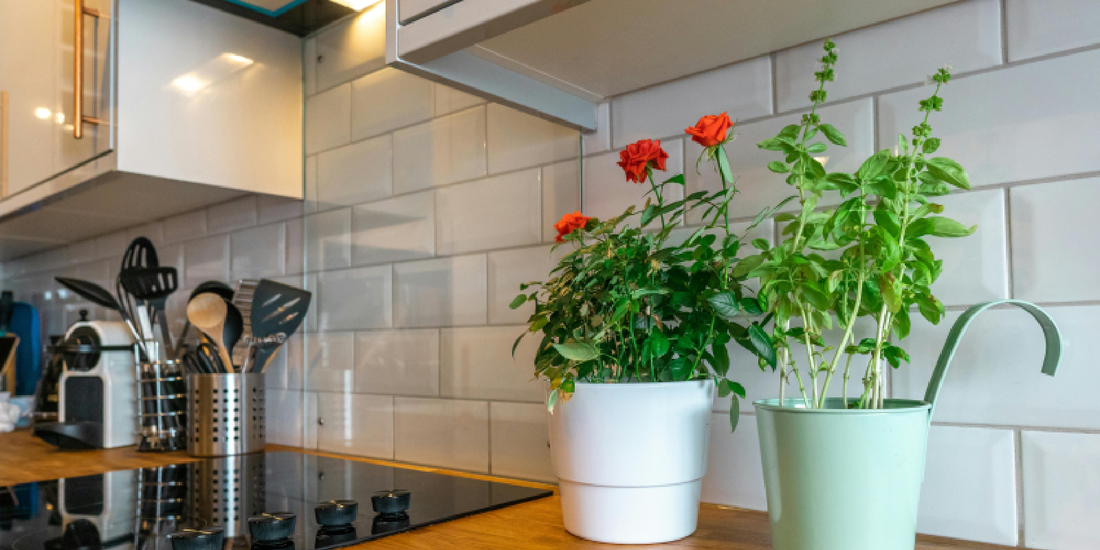
How to Use a Hygrometer for Indoor Gardening
Share
Indoor gardening is a rewarding way to bring nature into your living space, but success requires more than just sunlight and water. One of the most overlooked yet critical factors in maintaining healthy indoor plants is humidity. Plants are living organisms that respond not only to light and nutrients but also to the moisture content in the air. Too much humidity can lead to mold, mildew, and root rot, while too little can cause leaves to curl, brown, and drop. This is where a hygrometer becomes an indispensable tool.
In this guide, we will explore what a hygrometer is, why it is essential for indoor gardening, how to use it effectively, and how it complements modern plant stands like the amoyls VerdantGlow S-Shaped 8-Tier Plant Shelf with Grow Lights. By the end, you will have a clear understanding of how to create the perfect environment for thriving plants indoors.
What Is a Hygrometer?
A hygrometer is a device designed to measure the relative humidity in the air. Depending on the model, it may also display temperature and other environmental conditions. For indoor gardening enthusiasts, a hygrometer is as important as a watering can or grow light because it provides precise feedback on whether your plants are living in their optimal humidity range.
There are several types of hygrometers:
- Analog hygrometers: Simple dial-based devices that are affordable and easy to use.
- Digital hygrometers: More advanced models that display humidity and temperature readings on a screen, often with memory functions.
- Smart hygrometers: Connected to mobile apps, offering alerts and historical tracking for tech-savvy gardeners.
For most home gardeners, a digital hygrometer strikes the right balance between affordability, accuracy, and convenience.
Why Humidity Matters for Indoor Plants
Different plants thrive in different humidity ranges. For example:
- Tropical plants (monstera, calathea, orchids): Prefer humidity between 60–80%.
- Succulents and cacti: Thrive in low humidity levels, typically 30–40%.
- Herbs and leafy greens: Perform best around 45–60%.
Without monitoring, it is easy to misjudge the humidity in your home. Heating systems in winter can dry out the air, while summer rains or poor ventilation can make conditions too damp. Both extremes stress plants and make them vulnerable to pests and diseases.
By using a hygrometer, you can keep humidity within the ideal range and adjust when necessary, ensuring that your indoor garden grows stronger, greener, and healthier.
How to Use a Hygrometer in Indoor Gardening
Step 1: Place the Hygrometer Correctly
Position your hygrometer at plant height rather than on a high shelf or the floor. Humidity levels can vary by several percentage points depending on elevation within a room. For multi-tier plant setups like the amoyls VerdantGlow 8-Tier Plant Shelf with Grow Lights, consider placing hygrometers at different levels to understand microclimates.
Step 2: Calibrate if Necessary
Some hygrometers require calibration for accuracy. This can be done using the “salt test,” where a sealed container with damp salt should read around 75% humidity.
Step 3: Record Regular Readings
Check your hygrometer daily, especially during seasonal changes. Many digital models store minimum and maximum readings, helping you see patterns.
Step 4: Take Action Based on Results
- Low humidity (below 40%): Use a humidifier, mist plants lightly, or group them closer together.
- High humidity (above 70%): Improve air circulation with fans or dehumidifiers. Avoid overcrowding plants to reduce trapped moisture.
Step 5: Combine with Other Tools
Pair your hygrometer with thermometers and grow lights to maintain an overall balanced environment. When used alongside the amoyls VerdantGlow plant shelf, which integrates natural grow lights, your indoor garden can flourish year-round.
Practical Tips for Managing Indoor Humidity
- Group plants together: Plants release moisture through transpiration, so clustering them naturally raises local humidity.
- Use trays with pebbles and water: Place pots above the waterline to create a humidity buffer.
- Monitor seasonal changes: Winter heating can cause humidity to drop below 30%, while rainy seasons may push it over 80%.
- Avoid over-misting: While misting adds short-term moisture, it can also encourage fungus if overdone.
- Ventilation is key: Proper airflow prevents mold growth while keeping humidity consistent.
How a Hygrometer Enhances Indoor Gardening Success
Without a hygrometer, you are essentially guessing at one of the most important factors for plant growth. By having real data, you can:
- Prevent common issues like leaf drop, yellowing, or stunted growth.
- Create specialized environments for different plant species.
- Maximize the efficiency of your grow lights and plant shelf system.
- Improve the health of your entire collection, from tropical houseplants to edible herbs.
For indoor gardeners who invest in high-quality plant stands and grow lights, not pairing them with a hygrometer is like driving a car without a fuel gauge. It completes the picture of plant care.
The Role of the amoyls VerdantGlow Plant Shelf
The amoyls VerdantGlow S-Shaped 8-Tier Plant Shelf with Grow Lights is designed to help indoor gardeners manage light exposure and plant organization effectively. But when combined with a hygrometer, it becomes a full ecosystem manager. The multiple tiers allow you to create zones of different humidity levels, while the integrated grow lights ensure consistent photosynthesis. Adding a hygrometer gives you data-driven insights to fine-tune this environment.
By monitoring both humidity and light, you can create the perfect balance for your plants, transforming your living room into a lush, thriving indoor oasis.
Final Thoughts
A hygrometer may be small, but its impact on indoor gardening is enormous. It takes the guesswork out of humidity control, ensuring your plants live in an environment tailored to their needs. Whether you are nurturing a tropical monstera, growing fresh basil, or arranging succulents on the amoyls VerdantGlow plant shelf, a hygrometer empowers you with knowledge.
Indoor gardening is both art and science, and tools like hygrometers bridge the gap by turning invisible factors into measurable data. Invest in one, use it regularly, and you will notice the transformation in the health, growth, and vibrancy of your plants.
